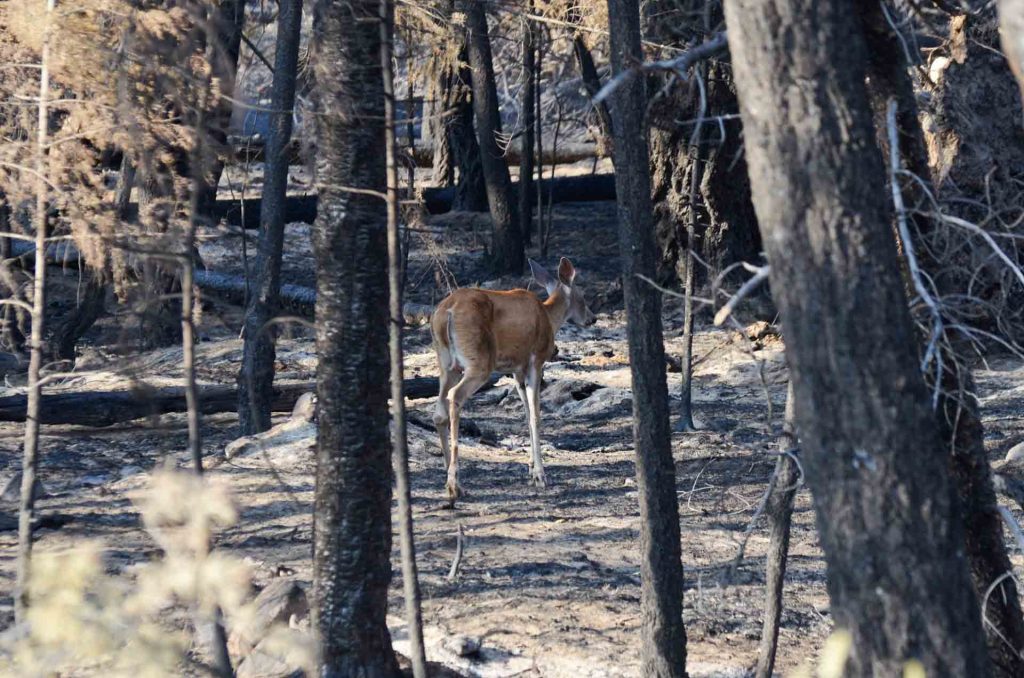Some animals escaped Jasper wildfire, others were not as lucky: wildlife rescue

Posted July 29, 2024 3:36 pm.
Last Updated July 30, 2024 9:51 am.
Animals that live in Jasper National Park were forced to flee their homes as a devastating wildfire tore through.
Dale Gienow, the executive director of WILDNorth – a northern Alberta wildlife rescue and rehabilitation centre – explains some animals are beginning to return, others will call elsewhere home, and some did not make it out alive.
Flighted birds, for instance, would have had to fly away to find a safe place, Gienow says. Their nests, like the homes of many human residents, burned last week.
“Those birds are now forced to go elsewhere and find nests where they might be in competition with others of their kind,” Gienow explained.
Gienow says animals like deer and moose could escape the flames, but others could not.
Being near their homes is “a great incentive for animals to try to stay in that area and survive,” the WILDNorth director said. “Those who can’t get out, they are unable to, they’ll bury under the rocks or under logs or do what they can to stay.
“Unfortunately, for some animals, notably smaller moving animals that can’t dig or get cover under rocks or logs – we’re unfortunately in this season things like baby birds that are unable to fly yet – fall victim to this kind of fire.”
Animals like birds or bears tend to return to their natural habitat to see if their homes are still intact. Pictures posted online recently by Parks Canada show wildlife has indeed already begun coming back to Jasper.
Officials say ‘Grizzly bear 222,’ a frequent visitor in the area around Jasper Park Lodge remains a “very healthy grizzly bear,” eating berries and clover on the edge of the Jasper Park Lodge golf course.
According to data collected by a GPS tracking collar, in the moments leading up to the extreme wildfire activity last Wednesday, Grizzly bear 222 and her cubs tucked themselves into a wet spot by the Athabasca River to stay safe.
“Fire is a natural process and we expect animals to find new places to live,” said James McCormick, a human-wildlife coexistence specialist with Parks Canada. “We have a team of 18 people managing wildlife in and around the town of Jasper.
“Because of all the fire and things that have been damaged, we’re looking at trying to manage garbage, food waste and spoiled food. We’re also out trying to look for any animals that were physically impacted by the fire and we have seen some that perished to the fire.”
Parks Canada says the wildfire will have lasting impacts on animals and their movements, and officials will work to make sure this doesn’t pose a risk before allowing residents to come back.
In terms of recovery of the forest, Gienow says it may take months or years, and changes in the ecosystem can happen during the recovery.
–With files from Logan Stein and Lauryn Heintz in Calgary








